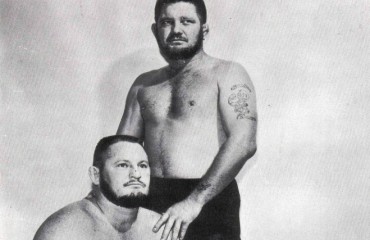The Game with The Brothers Hines
Table of Contents
On my recent trip to Portland, Oregon, I had the incredible honour of performing, and learning with Kevin and Will Hines. Commonly called The Brothers Hines when performing together, these two brothers are seriously on the same wavelength. They have mastered the slow-play game finding improv that I associate so distinctly with the Upright Citizens Bridge.

After working with the two brothers over the course of a weekend, I amassed a vast collection of notes and scribbles. This post is the culmination and distillation of that information into something that perhaps can share a little bit of an outsiders perspective on The Game.
The Game #
What is the game? The game is everything. It’s the way we structure our improvisations and our lives. It’s what makes us laugh, and it’s what the audience comes every night to see. The game is the idol of worship at Upright Citizens Brigade.
The game can occur in any situation, time, or place. When we set up a scene on-stage, we may or may not be thinking of the game. How do we find the game in a scene? It’s the first thing that this performance interesting, absurd, unique or fun. It’s the first weird thing that happens on stage. The game should be embraced and tended to.
If your scene partner creates a bizarre exaggeration of a real-life scenario, embrace and exist in that exaggeration. Don’t over explain, justify. What if the setup is truly bizarre — an outrageous hypothetical with no relation to lived reality? This is the normal in the scene, and the unique thing can come from contrast. Justify the world, and live within its rules. Don’t just explain them; make them tangible, and play them to their fullest. It was once described that scenes in improv are either normal people in extraordinary circumstances, or extraordinary people in normal circumstances; both situations are completely valid but transpire differently. In either case, you want to keep track of the real world, and even in the most out there situation, maintain ways to stay true to the shared perceptions of you, your improv partners, and your audience.
Let’s take a step back and describe some workshop exercises that will prepare you to reach a state of comedic flow and achieve maximum absurdity.
Exercises #
The first exercise is simple: describe an object. Create it in your mind and build it for your audience. Keep an eye to its details and start with a close lens before slowly expanding your field of vision. Don’t think of inventing details but rather discovering things about the object that are already there. Most of this is selling it to yourself and your improv team — if you believe it, so will the audience.
Discovery over invention.
The next exercise is to form a circle and voice a single character monologue with your group. The character is created line by line through the whole group, with each person building off what the previous team member contributes. There’s no hurry; be confident and calm. Hang out with the details and stew in your own truth (or, to put it another way, sit in your own farts). Expand the character with clear, confident, and specific details. Don’t just advance the story for its own sake; instead, breathe life into a shared persona.
Sit in your own farts.
Now let’s begin to use our bodies, which are an integral part of improv comedy. “Abstract Action Justification” works like this: one person gives an outsized, unplanned, unique, and nonspecific physical movement. A second person enters and justifies the first’s actions while also creating his or her own character relationship to that initial stimulus. Begin rationally, then start to hone in on that game characteristic — naturally develop and begin to chase that weirdness in the scene.
Chase the weird.
The two-person scene requires a lot from its participants, but its basic drives are the same. A successful scene immediately dives into a search for the game, a shared reality, and an interest in the other participant.
Improv and The Game #
The exercises above should get you into the mindset and flow of successful improv comedy. The details of a situation are what define its success or failure. You want to be bold, specific, and mindful, but you also want to be economical. Don’t just keep talking — and if a moment is fledgling, get out. You can always pull the rip cord. The absurdity or weirdness of a scene should be tangible and should be treated with emotional honesty. There is a lot to discover in any moment, and your comedy partners are creative. Work with your team to flesh out a situational and emotional reality rather than constantly piling on new inventions. Remember that, in improv, agreement is first priority. In standup comedy, it’s truth.
The game is the unusual, the weird in the scene, it is the hook, or schtick, or handle. We want to justify the weird, keeping it real but exploring and heightening it at the same time. Being grounded and real at the start of a scene only helps to illuminate the weirdness.
